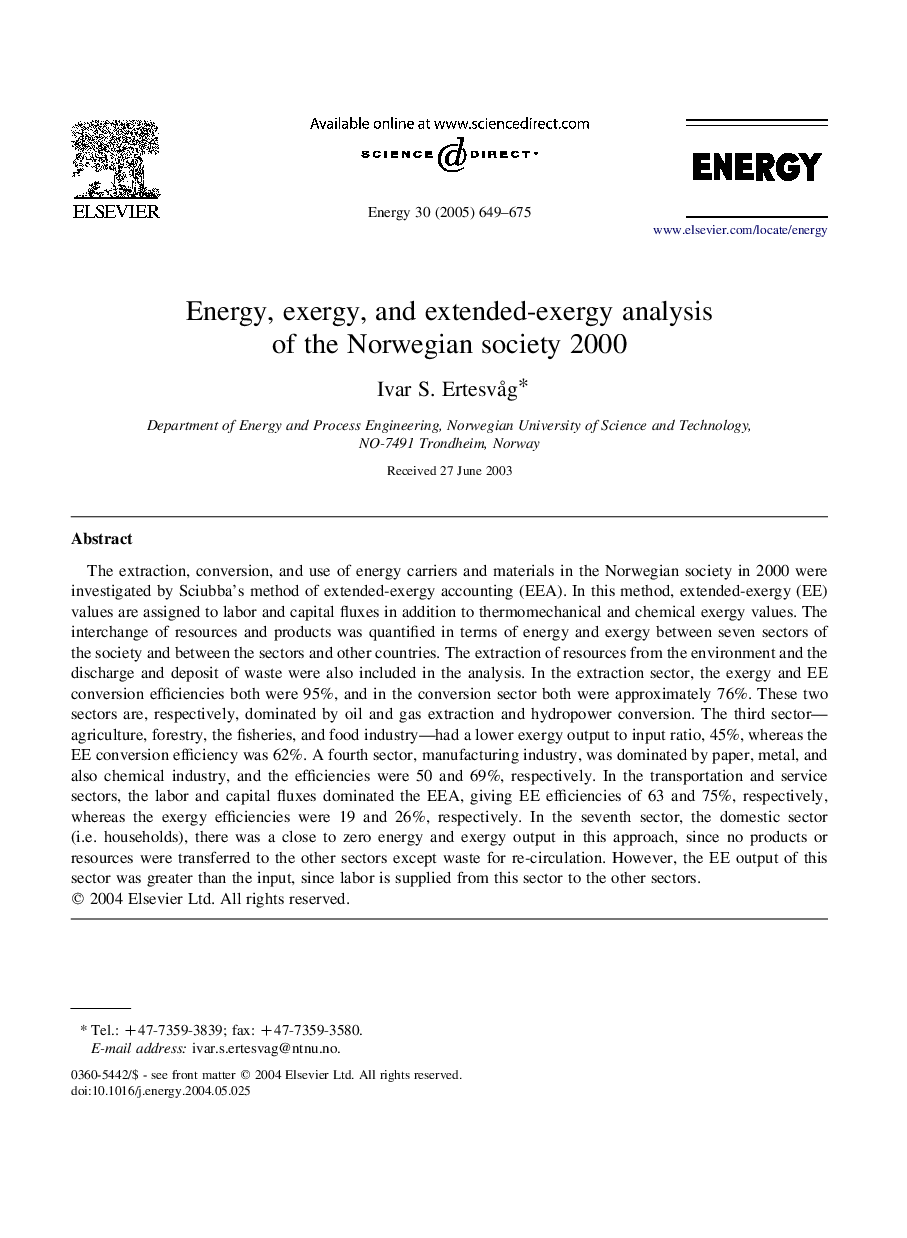| کد مقاله | کد نشریه | سال انتشار | مقاله انگلیسی | نسخه تمام متن |
|---|---|---|---|---|
| 10682952 | 1016237 | 2005 | 27 صفحه PDF | دانلود رایگان |
عنوان انگلیسی مقاله ISI
Energy, exergy, and extended-exergy analysis of the Norwegian society 2000
دانلود مقاله + سفارش ترجمه
دانلود مقاله ISI انگلیسی
رایگان برای ایرانیان
موضوعات مرتبط
مهندسی و علوم پایه
مهندسی انرژی
انرژی (عمومی)
پیش نمایش صفحه اول مقاله

چکیده انگلیسی
The extraction, conversion, and use of energy carriers and materials in the Norwegian society in 2000 were investigated by Sciubba's method of extended-exergy accounting (EEA). In this method, extended-exergy (EE) values are assigned to labor and capital fluxes in addition to thermomechanical and chemical exergy values. The interchange of resources and products was quantified in terms of energy and exergy between seven sectors of the society and between the sectors and other countries. The extraction of resources from the environment and the discharge and deposit of waste were also included in the analysis. In the extraction sector, the exergy and EE conversion efficiencies both were 95%, and in the conversion sector both were approximately 76%. These two sectors are, respectively, dominated by oil and gas extraction and hydropower conversion. The third sector-agriculture, forestry, the fisheries, and food industry-had a lower exergy output to input ratio, 45%, whereas the EE conversion efficiency was 62%. A fourth sector, manufacturing industry, was dominated by paper, metal, and also chemical industry, and the efficiencies were 50 and 69%, respectively. In the transportation and service sectors, the labor and capital fluxes dominated the EEA, giving EE efficiencies of 63 and 75%, respectively, whereas the exergy efficiencies were 19 and 26%, respectively. In the seventh sector, the domestic sector (i.e. households), there was a close to zero energy and exergy output in this approach, since no products or resources were transferred to the other sectors except waste for re-circulation. However, the EE output of this sector was greater than the input, since labor is supplied from this sector to the other sectors.
ناشر
Database: Elsevier - ScienceDirect (ساینس دایرکت)
Journal: Energy - Volume 30, Issue 5, April 2005, Pages 649-675
Journal: Energy - Volume 30, Issue 5, April 2005, Pages 649-675
نویسندگان
Ivar S. Ertesvåg,